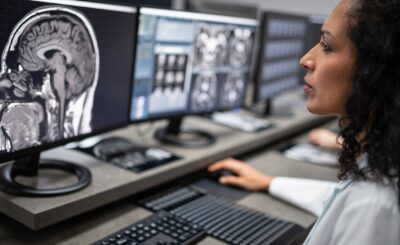X-rays have been used for decades as important diagnostic tools to view areas or parts that are not visible through the naked eye. These tools help healthcare professionals detect abnormalities and plan the treatment accordingly. Dental X-rays in the form of digital imaging have replaced conventional X-rays to offer more accuracy and detailing.
Digital X-rays offered by Mayfair, Northeast Philadelphia dentist, and their team pave the way for comprehensive and detailed diagnosis of several dental abnormalities and pathologies.
An overview of digital X-rays
A digital X-ray, or digital radiograph, is an advanced form of X-ray that uses electronic sensors instead of photographic film, as with a traditional X-ray. The captured image is converted to digital data immediately and is available for review within seconds.
Understanding the science behind digital X-rays
This is how the digital X-rays work:
- The digital X-rays differ from the traditional method due to the advanced digital technology used.
- A series of radiation beams with different wavelengths have the ability to penetrate through several layers of the body.
- This forms an image on a photographic film using digital sensors.
- These sensors usually come in the form of active matrix flat panels made up of a detection layer over an active matrix array of thin film transistors and photodiodes.
- These sensors can successfully convert the image into digital form in real time. This allows the dentist to view the results on a computer screen immediately.
Indications for digital X-rays
Digital X-rays act as preventive and diagnostic tools that provide valuable information that is not visible to the naked eye during routine dental exams.
Digital X-rays can help:
- Study the tooth and root morphology
- Detect problems inside a tooth or below the gumline
- Evaluate the bone loss
- Identify abscesses, cysts, and tumors
- Diagnose benign (non-cancerous) and malignant (cancerous) lesions
- Detect interdental tooth decay
- Diagnose any developmental anomaly
These X-rays greatly help save you time, money, and extensive dental procedures through early diagnosis of dental problems.
Potential benefits of digital X-rays
Digital X-rays are the most preferred types of radiographs due to the following benefits:
- Produce very high-quality images
- Radiation exposure can be adjusted to real-time
- The results can be viewed immediately
- Reduced exposure to radiation
- A lot of time and effort is saved
- The use of chemicals for developing the film is avoided
Conclusion
Digital X-rays are safe and effective diagnostic tools that can successfully detect oral abnormalities, helping dental professionals plan and execute an appropriate treatment strategy.








